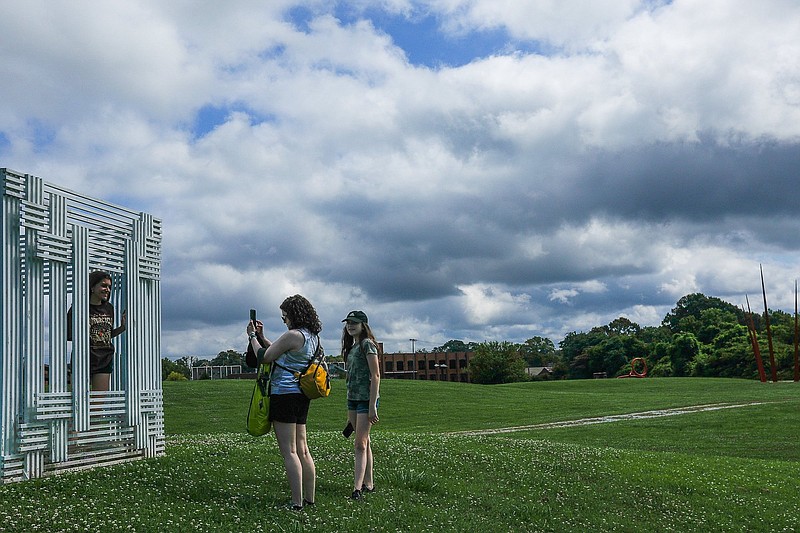(Editor's note: First of two parts)
Chattanooga's Sculpture Fields at Montague Park is a favorite place for local families to stroll while enjoying an afternoon amidst nationally acclaimed art installations. The site is a welcomed respite for quiet, contemplative thought and family time, but do visitors know the history of the park?
On Sept. 15, 1913, a Chattanooga Times headline read: "In Memory of T.G. Montague: Fine New Park Will Bear Familiar Name."
Theodore Giles Montague was indeed a recognizable name in Chattanooga. One of the founders of Chattanooga's First National Bank, which had opened shortly after the end of the Civil War, Montague became president of the bank after the death of his banking partner, William P. Rathburn. His 40 years as a banker were complemented by his encouraging relationship with many of the new industries that sprang up across Chattanooga during Reconstruction.
Montague believed in his adopted city and envisioned it growing to national prominence as an industrial and transportation center. Chattanooga Medicine Company, the Read House, Roane Iron Company, the Lookout Water Company, Forest Hills Cemetery, Chattanooga Pipe and Foundry Company and dozens of other local ventures benefited from Montague's quiet guidance and financial suggestions. Local residents who live in Highland Park might find it interesting to know that Montague was a principal in the development of the new community east of the city and provided the name for the area since it lay on "high land."
T.G. Montague was cited in a New York Times article in the early 20th century as one of Chattanooga's "seven millionaires" and, while he was obviously proud of his business acumen, he often cited his involvement with the Presbyterian church as his guiding light. Dr. Thomas Hooke McCallie commented on Montague as illustrating "his fine qualities by sustaining and casting his lot with the good men and women who stood for righteousness. Later he assisted in organizing the Second Presbyterian Church of which he was an officer for many years ... Mr. Montague left an ineffaceable record." Those words of high praise from another of Chattanooga's early community leaders help explain Montague's gift to the community he loved and nurtured for five decades.
The Chattanooga Times announcement noted that "as soon as City Engineer [Robert] Hooke can make the proper surveys, and the deeds are registered, Chattanooga will come into possession of twenty-three acres of valuable property situated east of the old Ruchs cotton mill between the new Rossville Boulevard and Main Street." Recognizing that the property was a gift from the heirs of the late T.G. Montague, the writer announced that the city "will establish a park which will bear the name of the donor and will be known as Montague Park," and that the transfer of the land would be handled by N. Thayer Montague, representing the heirs of the estate, and Commissioner [Joseph] Warner for the city.
The city welcomed the gift from the Montague family, and Warner held a news conference acknowledging the "acquisition of the property, which means the establishment of the largest park now in possession of the city ... especially adapted for park purposes ... and with the expenditure of a comparatively small sum of money, the ground can be beautified and turned into one of the prettiest and finest parks in the south."
The City Commission later that week "heartily" accepted the gift, and Mayor T.C. Thompson and Warner shared that they had walked "every foot of the ground and were enthusiastic over the establishment of the new park" that would serve citizens in the region who had limited lawns and outdoor access. Their excitement was compounded by the fact that the site was "not cut up by streets and the entire 23 areas is in one body."
Hooke, the city engineer, provided a map of the property to the commission, and the planning began.
Linda Moss Mines, the Chattanooga and Hamilton County historian, is the vice chairwoman of the Medal of Honor Heritage Center and regent, Chief John Ross Chapter, NSDAR.
